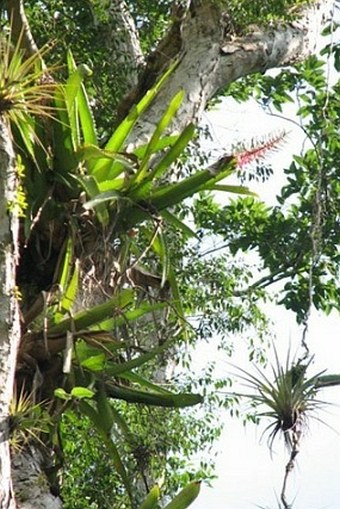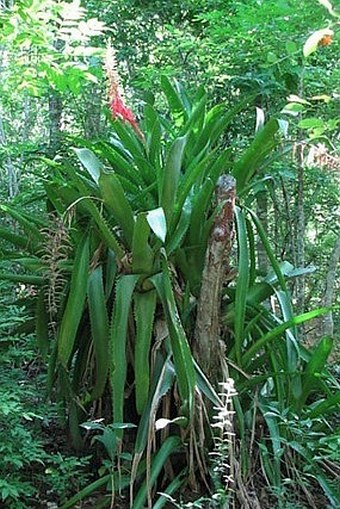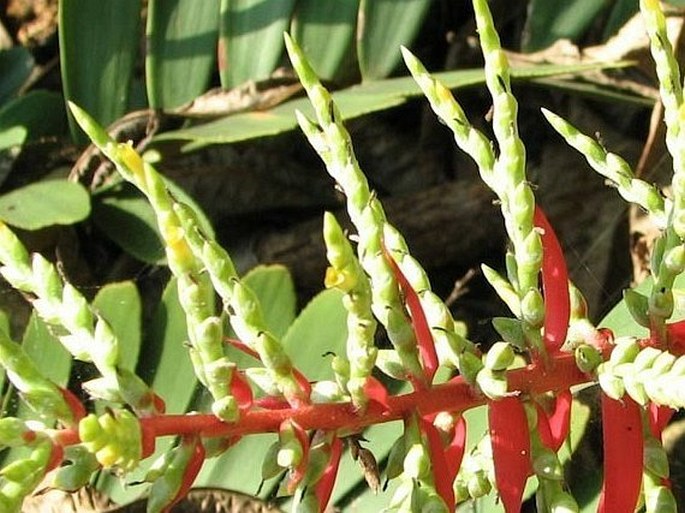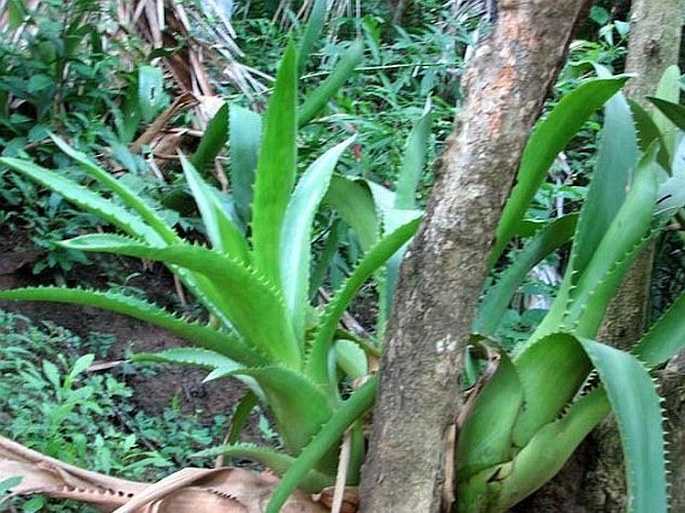Syn.: Aechmea barleei Baker, Aechmea isabellina Baker, Aechmea laxiflora Benth., Aechmea macracantha Brongn. ex André, Aechmea regularis Baker, Aechmea schiedeana Schltdl., Bromelia bracteata Sw., Hohenbergia bracteata (Sw.) Baker, Hohenbergia bracteata Beer, Hohenbergia laxiflora (Benth.) Baker, Hoplophytum bracteatum (Sw.) K. Koch, Tillandsia spinosa Sessé et Moc.
Family: Bromeliaceae Juss.

Distribution: From Central Mexico through Central America to northern Colombia and Venezuela.
Ecology: In coastal regions either in dense masses on rocks or high on trees in both hot jungles and rather arid regions up to altitude of 800 m.
Description: Acaulescent rosette of leaves, funnel-forming, bottle-shaped, up to 130 cm tall. Leaves up to 100 cm long and 25 cm wide, linguiform, bright green, grey lepidote, tips lance-shaped, with long prominent spines along the edges. Inflorescence up to 170 cm tall, straight or leaning, branched spike with large, red bracts under each branch; each branch with 9–15 flowers. Flowers with sepals 3–4 mm long, green, ending in a spine (typical for the genus), petals linear with rounded tips, 10 mm long, bright yellow, with a spine 2 mm long. Ovary is ellipsoid to round, green. Fruit is a berry dark blue to black (edible).
Notes: One of the large robust bromeliads well visible in the jungle. Suitable for large greenhouses only.





These images were taken in Mexico, south of Puerto Vallarta (October 2008).


